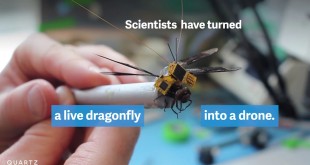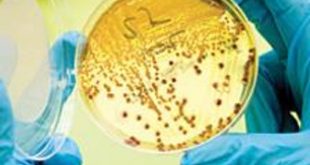Synthetic biology represents an intersection of biology and engineering that focuses on the modification or creation of novel biological systems. The current state of synthetic biology is mostly the result of research in biology, engineering, computer science, and information technology dating back to the mid-1900s. Synthetic biology has drawn increasing attention as a potentially transformative platform technology. Whether found in nature or synthesized in a test tube, the building blocks of synthetic biology are assembled to create biological systems. Synthetic biological systems can function in cell-free environments, such as cell extracts, or may be placed into living cells, such as bacteria, which serve as a “chassis.” In the short-term, synthetic biology is enhancing understanding of how living organisms work through progress in the ability to design and construct biological parts.
Synthetic biology is already being applied in a variety of fields. Through the creation of novel biological systems, synthetic biology offers potential solutions to many current challenges, such as climate change, energy needs, and global health. For example, synthetic biology may help address global warming through the development of artificial leaf technology, a synthetic version of the photosynthesis process. In the energy sector, synthetic biology is being used to devise more efficient methods of producing biofuels, and in the healthcare sector, synthetic biology may lead to biosensors that can permanently reside in the body to detect and treat abnormalities such as cancer.
Synthetic biology, though well established in industry, is still a relatively new field of application for the DoD. This interdisciplinary field combines the understanding of how genes operate and are organized in cells with engineering principles, to modify organisms for beneficial applications in areas such as performance augmentation, sensor development and materials synthesis, to name a few.
DOD’s DARPA is leveraging biotechnologies, such as synthetic biology, to develop new organisms with unprecedented behaviors and capabilities. DARPA’s Living Foundries program funds researchers who are developing the techniques and tools to reprogram living organisms to produce chemicals that would be useful across DOD and to produce a wide variety of chemical compounds that are not easily produced through traditional chemicals. DARPA’s goal for the program is to use organisms to make 1,000 molecules and material precursors spanning a wide range of defense-relevant applications. In addition,
The US Department of Defense (DoD) is investing $45 million dollars in a tri-service effort that focuses on synthetic biology (SynBio) for use in military technologies. The long form name of this project is the Applied Research for the Advancement of Science and Technology Priorities Program on Synthetic Biology for Military Environments. While still in the early research stages, engineering organisms could provide numerous tools with direct defense applications.
This interdisciplinary scientific field primarily involves altering the genetic makeup of organisms to achieve specific behavior, and the military wants in on its potential applications. By uniting SynBio experts within the US Air Force, Army, and Navy, DoD officials hope to develop serious capabilities for use throughout the military’s branches.
A key focus of the program is developing several environmental “chassis” microbes that will provide robust performance outside the lab environment. Researchers are also developing applications such as living (self-healing) materials, rugged field-deployable sensors for chemicals and other threats, and microbiome regulation/manipulation for enhanced human performance.
“There are consumer products on the market that depend on this technology. We’re trying to grow its use in the DoD,” said Dr. Claretta Sullivan, a research scientist at the Air Force Research Laboratory’s Materials and Manufacturing Directorate, who is also the Tri-Service Program Manager for SBME. “Our team is looking at ways we can reprogram cells that already exist in the environment to create environmentally friendly platforms for generating molecules and materials beneficial for defense needs.”
For example, organisms engineered to change their colors based on their environment could be used as living camouflage, and medications infused with protective microbes could help service member survival in tough conditions. However, it’s perhaps the US Naval Research Laboratory (NRL) in Washington DC that may hold the relevant interest in developing SynBio capabilities due to the marine environment potentials it holds.
By leveraging the subject matter expertise based in each of the DoD research laboratories, the SBME program seeks to establish a multi-functional, joint capability in synthetic biology, ultimately creating an ecosystem that ensures the U.S. military remains at the forefront in the field as it applies to defense objectives. Nearing the end of the first of three years, the program is already facilitating a higher level of technical awareness and cooperation among the Service Labs. At its end, enduring capabilities and expertise in synthetic biology will be the program’s legacy for years to come.
“This provides us with the opportunity to create that cross-cutting infrastructure and ensure there is effective communication between the DoD labs,” said Dr. Rajesh Naik, the SBME lead based at the AFRL’s 711th Human Performance Wing. “We have the smarts within the DoD when it comes to SynBio, but we are now developing the infrastructure and community to exploit the advantages for our needs.”
According to Naik, with synthetic biology as a field that is a “mile wide and a mile deep,” the SBME team recognized a need to focus their technical efforts and resources early in the program planning process to best enable success and continued collaboration beyond its end. An Executive Steering Committee with representation from each of the service labs was established to oversee three focused task teams, each of which is led by a different service lab. They are augmented by a technical advisory group comprised of external academic, industrial and federal partners who advocate for the SBME team in the larger community.
It’s a complex arrangement, but it is critical to ensuring focused efforts on program priorities.
“Keeping the team in close communication is a challenge. We have regular meetings and virtual telecoms nearly every week,” said Sullivan. “The fact that the team members are able to do this is remarkable and reflects their commitment to do good science and the best work possible for the DoD.”
The three SBME task teams combine the expertise, capabilities and tools from each of the service labs into a single, focused effort to meet the aim of a task effort. For example, the Navy Laboratory is leading a tri-service task team focused on developing systems biology tools in an open systems architecture, with the goal of creating a set of collaborative tools to enable SBME applications. Another task, led by the Air Force, is working to develop and prototype a cell-based system that is optimized for use in military environments. The Army labs are leading the effort to develop cell-free platforms for testing and delivering the genetic components.
The task teams are comprised of members from each of the different service laboratories, which facilitates a larger knowledge base and broader set of tools accessible to the group. A strong focus on standardizing protocols and methodologies pervades all of the task efforts to ensure effective information sharing across the domain.
“The program is really beneficial in helping to make sure that different service labs do not replicate the same efforts. We can take advantage of the work that is going on across the labs and within the overall SynBio community,” said Dr. Banahalli Ratna, Naval Research Laboratory.
In addition to standardizing protocols and enterprise sharing environments, several scientific publications have resulted from collaborative efforts within the group, and a working demonstration of a complicated, responsive gene network which operates in a simulated environment is expected to be delivered by the end of the effort.
The International Genetically Engineered Machine (iGEM) Foundation is an independent, non-profit organization dedicated to education and competition, the advancement of synthetic biology, and the development of an open community and collaboration. The Air Force, Army and Navy Research Laboratories fielded a team for the November 2017. The iGEM competition challenges students to work in multidisciplinary teams to solve real-world problems using a synthetic biology based on standard parts approach. By building genetically engineered systems using standard, interchangeable parts, iGEM teams create sophisticated projects that address challenges in environmental bioremediation, medical diagnostics systems, biofuels, as well as software and hardware.
In the end, the SBME program is a unique, dedicated effort committed to advancing the field of synthetic biology by leveraging the expertise embedded in each of the military research laboratories to the benefit of our nation’s warfighters across the spectrum.
“The DoD represents the largest research and development effort within the federal sector, and we’re spread out over Air Force, Army and Navy bases that may be hundreds of miles apart. This program has made me more aware of the capabilities in the DoD than ever before–without this awareness, leveraging of capabilities would never be possible,” said Emmanuel.
 International Defense Security & Technology Your trusted Source for News, Research and Analysis
International Defense Security & Technology Your trusted Source for News, Research and Analysis

